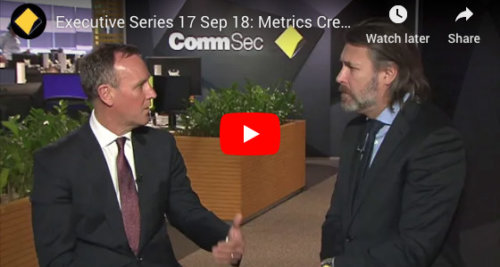Metrics debt fund nears $2b as it taps LIT market

Corporate debt managers Metrics Credit Partners is seeking to raise $638 million for its pre-existing listed loan fund, taking its total size to almost $2 billion.
The raising comes after global asset manager Neuberger Berman announced a $750 million follow-on offer for its high yield debt fund, and amid a wave of controversy about the riskiness of debt funds and the way they are sold.
Metrics, which loans money to about 150 Australian companies via the Master Income Trust, was among the first debt funds to tap individual investors via the listed investment trust (LIT) format in 2017. The fund, which trades under the ticker MXT, targets a net annual return of 5.45 per cent.
Since then other corporate debt managers have raised funds via listed investment trusts, such as structured credit managers Gryphon and property lenders Qualitas.
More recently, large global managers have raised funds in the format, with Newport Beach-based PIMCO likely to launch an offer in the coming weeks.
But the industry has come under fire amid accusations that brokers motivated by stamping fees or commissions are taking advantage of regulatory loopholes by distributing risky products to investors.
Some debt fund managers have hit back at the characterisation of their products as excessively risky and say they are providing access to diversified professionally managed debt portfolios in listed format.
Junk term inflammatory
Metrics co-founder and managing partner Andrew Lockhart strongly defended the corporate debt asset class and the listed trust format, pointing out that MXT had a lower cost base than most competing unlisted funds.
He said diversified listed debt funds had served investors well and the characterisation of the asset class as investing in junk bonds was inflammatory.
“We do extremely detailed due diligence on the companies we lend to as a means of ensuring our investor capital is not at risk,” he said.
“We invest in unrated credits but there are considerable protections for lenders to sub-investment grade companies.
“It’s inflammatory to call these junk bonds because as a lender you take covenants, exercise controls, take security and ensure other protections are in place to control the risk associated with lending to sub-investment grade companies.”
Dual roles
Mr Lockhart said he believed debt funds such as Metrics played two important roles. First, to provide an investment in a “liquid and tradeable format via the ASX” that offers a monthly cash income in excess of cash of term deposits.
Second, the fund was providing access to an important source of capital to Australian companies outside of the banking sector.
He also defended the stamping fees paid as part of the capital raisings, which have become a heated political issue after Labor’s spokesman for financial services, Stephen Jones, called on the Treasurer to put an end to commissions related to listed funds, citing recent “junk” raisings, as a matter of urgency.
“From my perspective it’s a nonsense that someone is going to promote a fund because there’s selling fees,” Mr Lockhart said.
“If I think of a financial adviser, they are going to have listed and unlisted funds across differing asset classes that are designed to provide their clients with a well designed and diversified portfolio. I don’t believe any financial planner is getting rich from accepting selling fees for a portion of a client’s diversified investment portfolio.
“We understand that the vast majority of financial planner advisers do rebate the fees because they are getting paid a separate fee for service from their clients. For most it is a discount that provides a valuable value-add benefit for their client.”
Mr Lockhart also said the role of brokers and research houses in researching and selecting the funds that have come to market was understated in the debate, while the “transparency of public markets allowed investors to compare products to global listed and unlisted funds”.
by Jonathan Shapiro | January 29, 2020 | Financial Review
Other News
Metrics Credit Partners Completes Acquisition of Taurus and BC Invest
Metrics Credit Partners (“Metrics”), a leading Australian based alternative asset management firm, has today successfully completed the acquisition of Taurus…
Graham McNamara to Retire as Managing Partner
Metrics Credit Partners (“Metrics”) today announced that Managing Partner Graham McNamara has advised the Board of his intention to retire,…
INSIGHTS
MCP Income Opportunities Trust (MOT) lists on ASX
Sydney, 29 April 2019: The Trust Company (RE Services) Limited (ABN 45 003 278 831) (Responsible Entity) is the responsible…
MCP Master Income Trust wins Lonsec Listed Fund Award
The award came a year after MXT was listed on the Australian Securities Exchange






